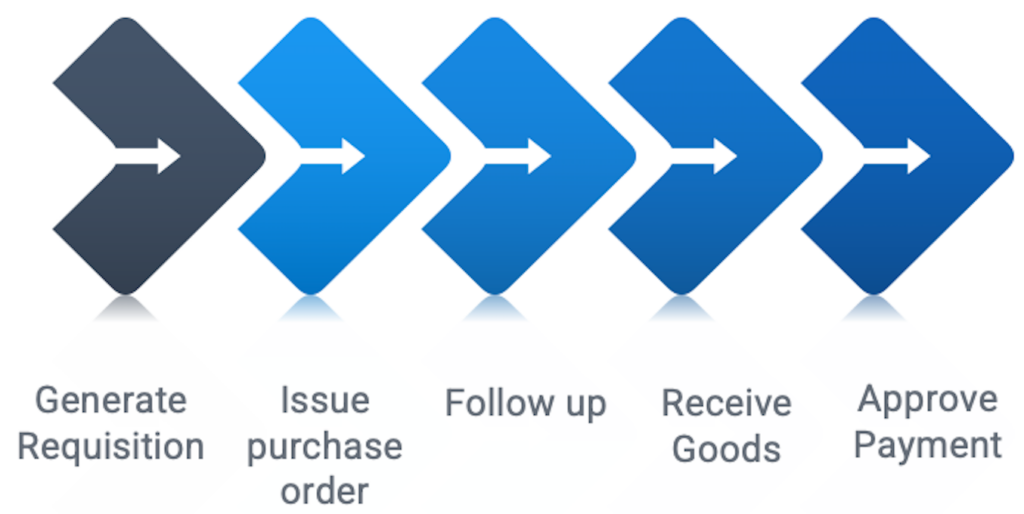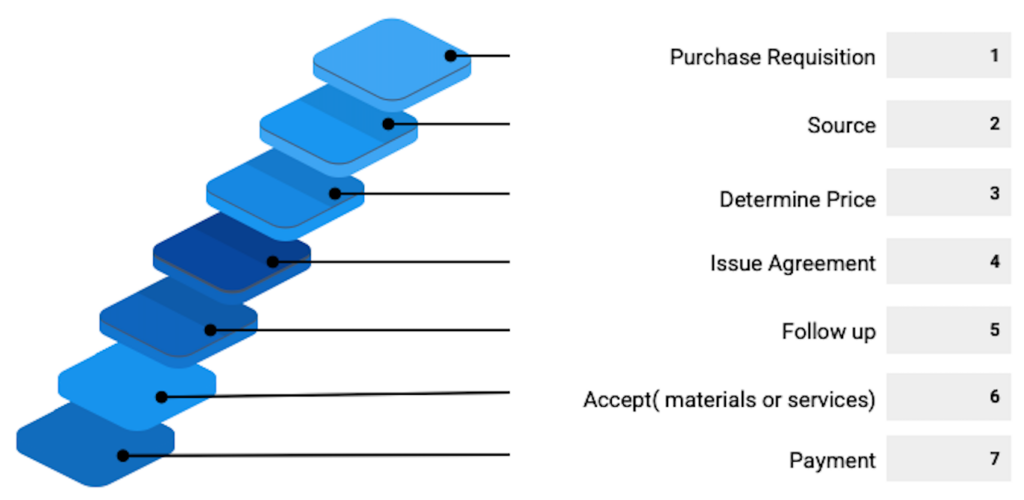Purchase Order Flow
The purchase order flow includes five steps.
The steps are discussed below
1. A requisition is an internal request to initiate a purchase order; it may be on paper or may be electronic in an ERP system. The functional area needing the item will initiate the requisition. It should provide the functional requirements, quantity, and delivery requirements. A maximum price may also be specified. Requisitions above a certain dollar amount usually require prior approval at the appropriate level. Purchase requisition as: An authorization to the purchasing department to purchase specified materials in specified quantities within a specified time.
2. Purchasing will select a supplier based on the requisition requirements and issue a PO. Once released, the PO is considered an open order until the end of the purchasing cycle. Alternatively, purchasing might use various types of auctions or trade exchange services to find suppliers when price is the primary criterion (e.g., for commodities). One example is a reverse auction, an internet auction in which suppliers attempt to underbid their competitors. Company identities are known only by the buyer. Purchase order as: The purchaser’s authorization used to formalize a purchase transaction with a supplier. A purchase order, when given to a supplier, should contain statements of the name, part number, quantity, description, and price of the goods or services ordered; agreed-to terms as to payment, discounts, date of performance, and transportation; and all other agreements pertinent to the purchase and its execution by the supplier.
3. Purchasing will track the status of the order to ensure that it will arrive on schedule. If it is at risk of arriving late, purchasing may expedite the order, especially if it will impact production schedules. If the order will arrive early, purchasing may de-expedite it. Purchasing will also keep the requesting person or department aware of the status of the order.
4. Receiving will compare the incoming order with the PO and packing slip. Any necessary inspections or item counts are also performed at this time. Receipt of full and partial shipments is recorded and tracked. Damage caused in shipment will result in a freight claim to the carrier, while unacceptable goods will be addressed per the contract details and may or may not result in a return. The accepted goods are entered into inventory, and data on actual receipt date, quantities, and quality are tracked for supplier monitoring and controlling purposes.
5. The purchasing department performs a three-way match between the PO, the receiving report, and the invoice to make sure that quantities and materials are correct. After goods are received and accepted, the organization approves payment to the supplier and closes the order. Accounts payable is then responsible for payment.
The Purchasing Cycle and The Purchase Order Flow
The purchasing cycle includes the purchase order flow. Review the steps in the purchasing cycle in the image.
The primary difference between the purchasing cycle and purchase order flow is the purchasing cycle also involves sourcing and determining pricing.


